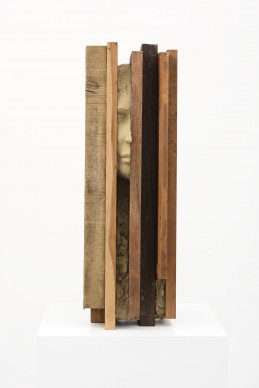There are those who claim that the art market is globalised but as the Swiss dealer Ernst Beyeler used to say in the ’90s, ‘The Italians buy Italian, the Americans buy American and the Germans buy German.’ Arco, which opened on Thursday, provides an interesting microclimate for it is a fair which is not only important locally, but also a cultural event for all Spain and the preeminent platform for Latin American art in Europe. Its biggest problem is that the Armory Show in New York happens the week afterwards, Tefaf in Maastricht with its contemporary art section the week after that, and hot on its heels is Art Basel in Hong Kong.
So which part of the market does that leave? Well, the Spanish for one who are in crisis at the moment, the Europeans who love Spain and its attitude to life, the Latin Americans who feel at home here, and the curious. Carlos Urroz, the fair’s director, has pulled off a remarkable show this year, luring some truly excellent galleries who have been offered small spaces free of charge to present dialogues between two of their artists.
The award for this year’s most eye-catching stand goes to the Belgian Zeno X, which has staged a conversation between Dutchman Mark Manders’ typically manhandled clay faces and the mysterious beings by the Belgian painter Michael Borremans. Borremans adopts a classical style of painting but adds his enigmas (What is this young girl doing?) and has a strong attachment to solitary and apparently introspective characters. Is he expressing a contemporary idea? Yes, insofar as everyone, despite the internet and all these terrifying advances of contemporary life, find themselves at times alone, face-to-face with themselves, trying to do something a bit odd. But there’s also a morbid streak to Borremans. However that doesn’t prevent there from being a high demand for his work, as Frank Demaedg from Zeno X acknowledges. His painting has the virtue of seeming familiar even before you’ve seen it. The two works that I spotted on the stand had both been sold by the time the fair opened. Or maybe I should say pre-sold.
Spruth Magers, which operates galleries in Berlin, London and as of this weekend Los Angeles too, is also featured in the section celebrating 35 years of ARCO. It has decided to present a dialogue between Richard Artschwager, the American artist who died in 2013, and Analia Saban who is originally from Argentina and a former student of the brilliant Californian artist John Baldessari. In their own way, both engage conceptually with furniture . Artschwager’s sculpture of a mirror that reflects nothing ($50,000, edition of 12) is a remarkable piece. Made of formica, as is standard practice for this artist, it appears to represent, in three dimensions, a drawing of a mirror. It reflects nothing. A piece of furniture that serves no purpose is, properly speaking, a work of art. At the stand I meet Andreas Schleiger-Lange who worked at Spruth Magers for six months. Previously he ran a gallery in Paris and then in Berlin. Asking what his vision of the market is, he replies, ‘The art world has changed. To work as a gallerist you have to be a certain size. You have to represent at least 50 artists and have clients all over the world. We know that nowadays the majority of sales happen at the fairs. If you’re a small gallery with works selling for 5,000 to 20,000 euros, how are you going to survive? The big galleries, though with similar expenses, have much higher price tags.”
The new art market is in gestation.
There are 221 exhibitors at ARCO fair, among them some Spanish galleries of uneven quality.
Support independent news on art.
Your contribution : Make a monthly commitment to support JB Reports or a one off contribution as and when you feel like it. Choose the option that suits you best.
Need to cancel a recurring donation? Please go here.
The donation is considered to be a subscription for a fee set by the donor and for a duration also set by the donor.








